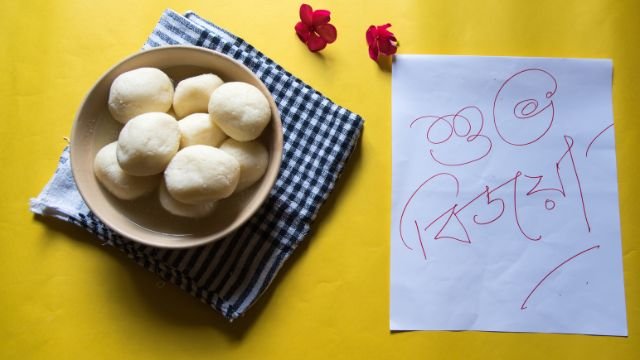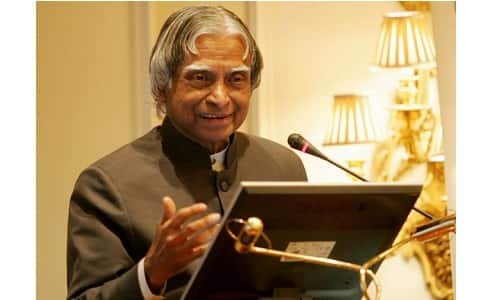Languages are a concept that is frequently employed as a highly effective communication technique. These tools have nevertheless also developed to be quite valuable to linguist aficionados all around the world. There are currently more than 6500 languages used in the world. Languages have evolved significantly over time, and they are no longer exclusively spoken by native speakers. People now frequently study the languages of their choosing based on their popularity and attractiveness.
What is the Primary Language of the World?
The world’s oldest language is Sanskrit. Sanskrit is known by the name Devbhasha. All European languages seem to have been impacted by Sanskrit. Every college and educational institution in the world consider Sanskrit to be the oldest language.
List of Top Sweetest Languages in the World
| Rank | Language | Number of Countries That Speak this Language |
| 1 | Bengali | 4 |
| 2 | Italian | 6 |
| 3 | Spanish | 20 |
| 4 | French | 29 |
| 5 | Dutch | 4 |
| 6 | Hindi | 4 |
| 7 | Japanese | 2 |
| 8 | Arabic | 26 |
| 9 | English | 55 |
| 10 | Spanish | 20 |
Let’s find out the top 10 sweetest languages in the world:
1. Bengali
Did you know that, according to a UNESCO assessment, Bengali has been named the “sweetest language in the world”? Bengali, which derives from Sanskrit, is considered to be the world’s prettiest language. It is primarily spoken throughout Bangladesh and in areas of east India (West Bengal). The core dialect is the same, despite minor variations in accent and style at various points. Its widespread use is a result of its straightforward pronunciation and elegant but accurate emotionally expressive words.
Assam and the Andaman and Nicobar Islands are only a couple of the places in India where it is extensively spoken. It is even acknowledged in the Indian Constitution. Bengali’s flowing script and melodic pronunciation give it a musical feel. The lyrical and poetic qualities of the language, along with its extensive literary legacy, make it pleasant to hear. Bengali is frequently utilized in songs, which enhances its sweetness.
Key features
- Musical quality with a flowing script and melodious pronunciation.
- Lyrical and poetic nature, enriched by a literary heritage.
- Frequently used in songs and music.
2. Spanish
Spanish is a popular choice for poetry, literature, and music because it is a Romantic language recognized for being expressive and passionate. It is a language which is second most spoken on the globe. It has roots in several languages, with Latin, Greek, and Arabic having the greatest effect. Of all Romance Languages, it is the most distinguished. Because of its origin in Spain’s Castile province, it is frequently referred to as the “Castilian Language.” It has been regarded as the second-sweetest language in the world plus is an official language of the United Nations, the European Union, and several regions of the United States.
Spanish’s smooth, flowing phonetics and passionate intonation contribute to its sweet-sounding quality. The language is particularly pleasing to the ear because of its musicality and expressiveness. The expressive and passionate speech of the Spanish language adds to its charm.
Key features
- Smooth, rolling phonetics and passionate intonation.
- Musicality and expressive nature that pleases the ear.
- Known for its passionate and emotive speech.
3. Dutch
The delicate, expressive pronunciation, melodious sounds, rich literary tradition, musical heritage, varied dialects, and historical influence of Dutch make it the sweetest language, making learning a fascinating and enjoyable experience.
It has its roots in the Old Frankish language. It is the closest relative of German and English and is a West Germanic language. Many words in the English language, including spook, yacht, dock, brandy, and stoop, have Dutch roots. In the Netherlands and some areas of Belgium, it is commonly spoken. The Dutch language has been written down in three generations: Middle Dutch, Old Dutch, and Standardized or Modern Dutch.
Key features
- Dutch is renowned for its delicate and melodious sounds, which combine pleasant vowel sounds with gentle and guttural consonants.
- The precision and clarity with which Dutch speakers usually utter their words contribute to the attractiveness of the language.
- Several eminent poets and authors have contributed to the literary tradition and cultural relevance of Dutch.
- It features a variety of regional dialects, each with its special sweetness and beauty.
- Dutch has historical relevance since it was among the languages that impacted the growth of Afrikaans, a language spoken in South Africa, broadening and sweetening it.
4. Italian
Italian is frequently seen as pleasant because of its melodic rhythm, gentle consonants, and mellow vowel sounds. The language’s reputation for sweetness is a result of its expressiveness and its lengthy history in opera, poetry, and music. Italian’s romantic characteristics are also well-known, which adds to its allure.
The Italian language, or Italiano as it is more often known, is a Romance language and is widely regarded as one of the sweetest and gentlest languages in use. Italian is a language that 66 million people worldwide speak. It was the language of revolutionary thinkers like Dante da Vinci and Pavarotti.
Key features
- Musical rhythm with soft consonants and smooth vowels.
- Expressive and rich history in music, opera, and poetry.
- Notable for its romantic qualities.
5. French
The pronunciation of French is praised for being graceful and endearing. It sounds elegant and sophisticated because of its soft liaisons and flowing intonation. The delicacy of the French language is enhanced by its long-standing associations with culture, art, and romance.
French is a Romance language, like Spanish. It evolved from Gallo-Romance, a language that was spoken in Gaul, particularly in Northern Gaul. It mostly descended from the slang Latin of the Roman Empire. French has been ranked as the fourth-sweetest language in the world and is an official language in over 25 countries across 5 distinct continents.
Key features
- Elegant and charming pronunciation with gentle liaisons.
- Flowing intonation that sounds refined and sophisticated.
- Strong associations with art, culture, and romance.
6. Hindi
Hindi’s lovely blending of consonants and vowels is what gives the language its sweetness. Many find the language to be appealing because of its poetic quality and expressiveness. Hindi has a rich cultural history and is frequently linked to poetry and Bollywood, which adds to its charm.
Key Features
- Beautiful blend of consonants and vowels.
- Lyrical and expressive nature with captivating qualities.
- Rich cultural heritage, often associated with poetry and Bollywood.
7. Spanish
Spanish’s smooth, flowing phonetics and passionate intonation contribute to its sweet-sounding quality. The language is particularly pleasing to the ear because of its musicality and expressiveness. The expressive and passionate speech of the Spanish language adds to its charm.
Key features
- Smooth, rolling phonetics and passionate intonation.
- Musicality and expressive nature that pleases the ear.
- Known for its passionate and emotive speech.
8. English
Despite popular belief, English did not hold the top spot. Instead, Mandarin took the top spot, closely followed by English. Now, the number of speakers has significantly expanded. About 1.4 billion individuals speak English on the globe. Additionally, it is one of the UN’s 6 official languages.
Key features
- This Germanic language, which is a member of the Indo-European language family, serves as the universal language.
- Many nations around the world, on all continents, have English as their native tongue. And almost a billion people speak it as a second language.
9. Arabic
Arabic has a reputation for having a beautiful sound thanks to its calligraphy and the flowing fluidity of its alphabet. Many people regard the language to be elegant and beautiful because of its long history in poetry, literature, and holy texts. Arabic’s reputation as one of the most beautiful languages is largely due to its “calligraphic” features. Arabic calligraphy is a technique to express the creative nature and body of poetry and is widely revered by religious lovers all over the world.
Key Features
- Calligraphic beauty and flowing script.
- Elegance and beauty are derived from literature, poetry, and religious texts.
- Deep-rooted history and cultural significance.
10. Japanese
Japanese is frequently praised for its rhythmic and mellow intonation, which has artistic value. The sweet and calming characteristics of the language are a result of its clarity and ease of pronunciation. Haiku poetry, which emphasizes its melodic elements, has a long history in Japanese culture.
Key Features
- Rhythmic and gentle intonation with aesthetic value.
- Simplicity and precision in pronunciation.
- The rich tradition of haiku poetry emphasises melodic aspects.
Conclusion
With the world’s loveliest languages listed above, one could be led to believe that a language can be more than just a means of communication; it can also have softness and beauty which can give it an advantage over other languages. After all, a language serves as a bridge between citizens of distant nations, a way to start a conversation, and a channel for exchanging ideas. In addition to enhancing the communication process, a delicate undertone, a particular lilt, and a crisp tint can catalyze the development of strong emotional ties and connections.

Rahul Kumar is a passionate educator, writer, and subject matter expert in the field of education and professional development. As an author on CoursesXpert, Rahul Kumar’s articles cover a wide range of topics, from various courses, educational and career guidance.




